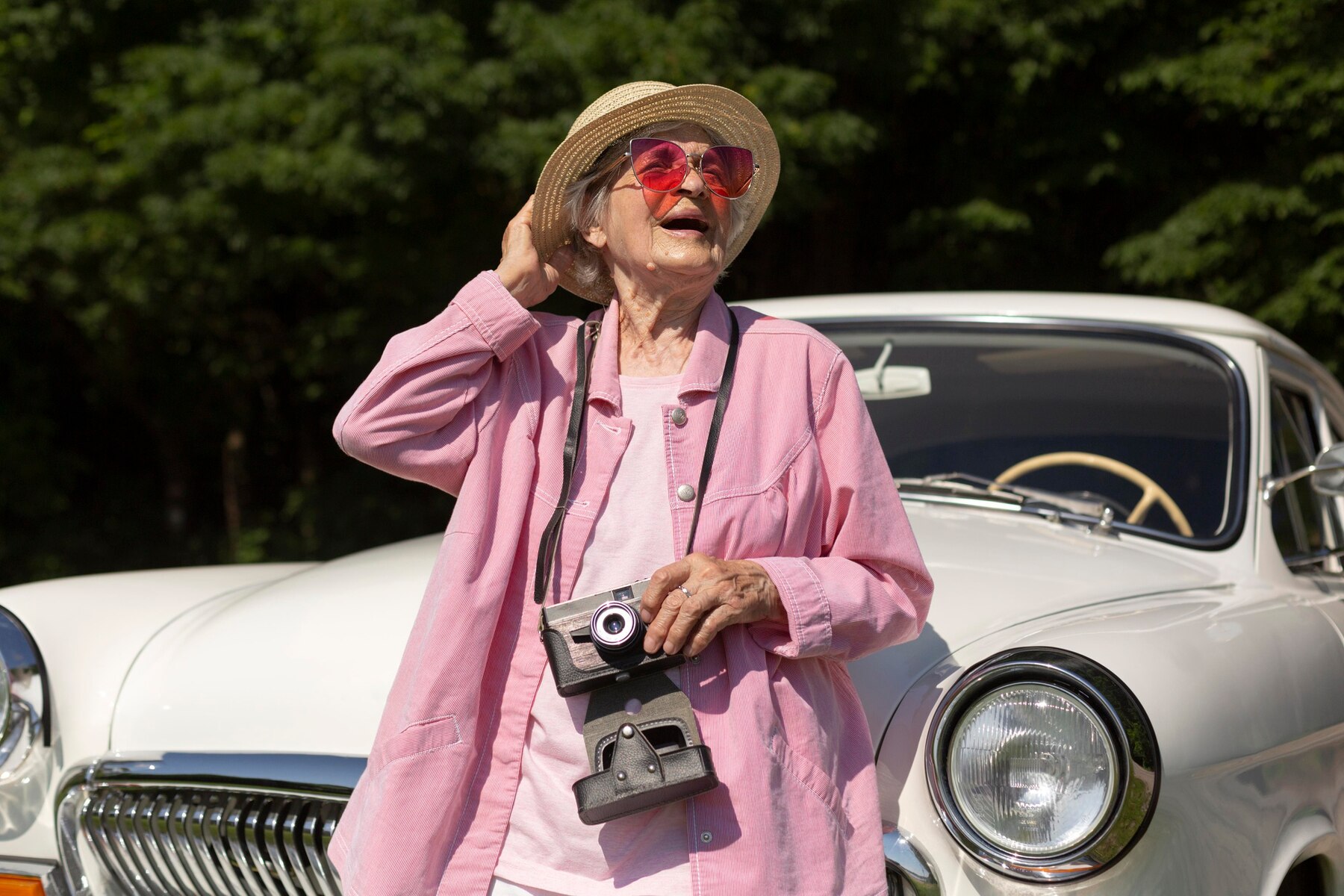Nostalgia isn’t just a sentimental feeling that transports us back to the past—it’s a powerful force shaping the fabric of today’s popular culture. From reboots of classic TV shows and movies to the resurgence of retro fashion and music, nostalgia has taken center stage in the entertainment industry and beyond. But why has this longing for the past become such a dominant theme? In this article, we’ll explore the psychological and cultural reasons behind nostalgia’s rise, how it’s influencing current trends, and the ways it’s changing the entertainment and consumer industries.
The Psychology of Nostalgia: Why We Long for the Past
Nostalgia is a complex emotion that combines longing for something once experienced with a sense of loss. It’s not just about missing the past; it’s about finding comfort in something familiar during uncertain times. In an increasingly fast-paced and unpredictable world, nostalgia offers a sense of stability and warmth.
Psychologically, nostalgia triggers the release of dopamine, the “feel-good” neurotransmitter. When we reminisce about positive memories from the past, whether it’s a childhood TV show, a favorite childhood snack, or a long-lost friendship, our brains reward us with a boost of happiness. It’s no surprise, then, that brands, creators, and media companies are tapping into this emotion to connect with audiences on a deeper, more emotional level.
The Rise of Retro Entertainment: Reboots, Sequels, and Spin-Offs
One of the most visible manifestations of nostalgia in today’s popular culture is the wave of reboots, sequels, and spin-offs dominating the entertainment industry. From the return of “Friends” to the reinvention of “The Lion King” in live-action form, it’s clear that Hollywood is cashing in on our fondness for the past. This isn’t just about reviving old franchises—it’s about re-contextualizing them for a new generation, while keeping the essence that made them iconic.
Why the Big Studios Are Leaning Into Nostalgia
The entertainment industry’s shift toward nostalgia-driven content is a calculated decision. Reboots offer a sense of familiarity, but they also tap into established fan bases that are more likely to show up in theaters or stream content online. For studios, it’s less risky to rehash a popular concept than to gamble on something entirely new. In a world where audiences are more fragmented than ever, nostalgia provides a ready-made market of consumers who already have an emotional attachment to these properties.
Take, for instance, the success of “Stranger Things,” Netflix’s hit series that draws heavily from 1980s pop culture. The show’s blend of supernatural mystery with ’80s references, fashion, and music has captivated audiences worldwide, especially those who lived through that decade. For younger viewers, it’s a fascinating glimpse into a time before the internet and smartphones. For older viewers, it’s a trip down memory lane, offering a sense of comfort and continuity.
The Fashion Renaissance: Trends That Never Die
Nostalgia isn’t just alive in movies and TV shows; it’s also making waves in the fashion industry. Over the past few years, there’s been a noticeable resurgence of trends from the ’90s and early 2000s. From chunky sneakers and crop tops to oversized blazers and plaid skirts, designers are drawing inspiration from decades past to create modern-day collections that resonate with both older and younger generations.
The Cycle of Fashion: How Old Trends Become New Again
Fashion, as they say, is cyclical. Every few decades, trends from the past seem to return, but with a modern twist. Today’s fashionistas are embracing styles from the late 20th century, reinterpreting them in ways that reflect contemporary sensibilities. Brands like Gucci and Prada are bringing back vintage styles, while high-street retailers like H&M and Zara are reintroducing iconic designs with a more sustainable, contemporary approach.
For younger consumers who never lived through the ’90s or early 2000s, these fashion trends offer an opportunity to experience the nostalgia of a different era. For older consumers, these styles evoke memories of youth, making the purchase of retro-inspired pieces feel both timely and emotionally rewarding.
Nostalgia and Music: Vinyl Records, Cassette Tapes, and Retro Sound
Music, too, has been deeply impacted by the wave of nostalgia. The resurgence of vinyl records is a prime example. Despite the dominance of digital streaming platforms like Spotify and Apple Music, vinyl sales have reached record highs in recent years. Vinyl’s tactile nature and the experience of playing a record from start to finish evoke a sense of nostalgia for a simpler time when music was something to be savored.

The Role of Music in Nostalgia Culture
For many, music is the most powerful trigger for nostalgia. Hearing a song from the past can instantly transport us to a specific moment in time, whether it’s a summer vacation, a high school dance, or a family road trip. Artists are well aware of this emotional connection, which is why many are incorporating retro sounds into their music. Contemporary pop stars like The Weeknd, Dua Lipa, and Harry Styles are drawing inspiration from the ’80s and ’90s, infusing their music with synths, drum machines, and melodies that feel both familiar and fresh.
Even in the realm of music videos, artists are increasingly incorporating retro aesthetics—think neon lights, vintage clothing, and throwback cinematography. The result is a blend of old and new that feels both nostalgic and innovative, appealing to both older fans who grew up with those influences and younger listeners discovering them for the first time.
How Nostalgia Is Reshaping Consumer Culture
It’s not just entertainment and fashion that are being influenced by nostalgia—consumer behavior is also shifting as brands tap into the emotional appeal of the past. From limited-edition product releases to reimagined versions of classic toys, companies are capitalizing on the desire for nostalgia in a variety of ways.
Limited-Edition Products: The Power of Collectibility
Many companies are releasing special, nostalgia-driven products, often as limited-edition items, which creates a sense of urgency and exclusivity. Take, for example, the return of Tamagotchi, the digital pets that were a sensation in the late ‘90s. The brand reintroduced updated versions of the toy, which became an instant hit with both the original fans who had grown up with them and a new generation of consumers eager to experience the phenomenon for themselves.
Similarly, brands like Coca-Cola and Pepsi have capitalized on nostalgia by reviving vintage packaging or offering limited-time flavors that evoke memories of a bygone era. These nostalgia-driven products are often marketed with phrases like “for a limited time only” or “back by popular demand,” which increase their appeal and drive consumers to make a purchase.
The Dark Side of Nostalgia: Can We Move Forward While Looking Back?
While nostalgia has its merits, there’s a potential downside to this obsession with the past. It’s possible that by constantly looking backward, we risk stifling innovation and progress. The more we indulge in nostalgia, the less space there may be for fresh ideas to emerge. Additionally, there’s the risk of romanticizing the past, ignoring its flaws, and missing opportunities for real change in society.
Striking a Balance: Embracing the Past Without Living in It
The key to navigating the nostalgia boom is finding a balance. While it’s perfectly fine to celebrate the past, we should also embrace the present and future. In popular culture, this means blending timeless influences with cutting-edge creativity. In consumer culture, it means integrating nostalgia with new technologies and sustainable practices.
Nostalgia will always have a place in our lives, but it’s crucial that we don’t allow it to dominate every aspect of our culture. As much as we long for simpler times, we also have to keep moving forward, creating new memories, and imagining the future.
Conclusion: Nostalgia Is More Than Just a Trend – It’s a Cultural Force
Nostalgia is no longer just a fleeting feeling—it’s a driving force in today’s popular culture. From entertainment and fashion to music and consumer products, nostalgia is shaping the way we experience and engage with the world. As we look back to the past, we do so with a sense of longing for the comfort, familiarity, and emotions it provides. At the same time, we must ensure that we use nostalgia as a tool to enhance our future, rather than as a way to escape it.
By understanding the power of nostalgia and embracing its influence in thoughtful ways, we can continue to shape a culture that honors the past while embracing the future. Whether we’re binge-watching classic TV shows, buying vinyl records, or wearing ’90s-inspired fashion, nostalgia is changing everything—and it’s here to stay.
